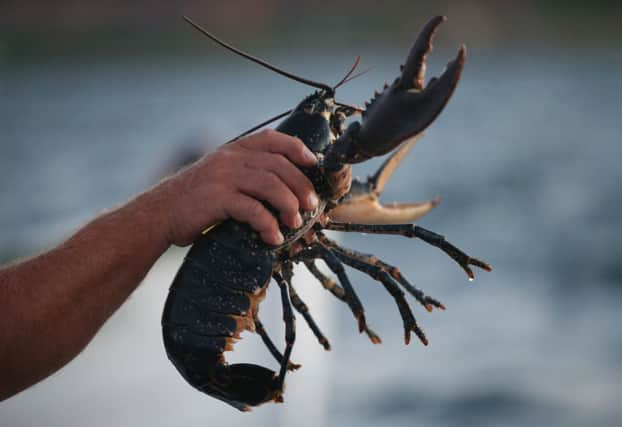10,000 locally bred Scottish lobster set for menus


Up to 10,000 young lobsters could be delivered at a charity-run hatchery in East Lothian, ready for release into the North Sea later in 2015.
The scheme has had funding from the Coastal Communities Fund, providing a budget for launch staff and equipment to help rear its first lobsters from eggs to the juvenile phase, when they are suitable for release.
Advertisement
Hide AdAdvertisement
Hide AdThe scheme, which began in 2011, suffered a major setback when the original hatchery was damaged by severe weather in 2012. Now it is run from a specially adapted container at North Berwick harbour.
“It has taken a long time to come together, both with finding the funding and recovering from the storm,” Jane McMinn, director of Firth of Forth Lobster Hatchery, said.
“But we are looking at producing juvenile lobsters to be released into the sea next year and aim to produce about 10,000 of them.”
The hatchery believes introducing the young lobsters will benefit the fishing communities of the area, as well as strengthening the marine ecosystem and ensuring there is a sustained population of the shellfish available in East Lothian.
Breeding juvenile lobsters in the controlled conditions of the hatchery is believed to give them the best chance of surviving in the wild.
Lobsters are cannibalistic – even at the larvae stage of their lives – and need to be kept apart to ensure they do not eat each other.
The hatchery collects the eggs from the breeding females, known as hens, and moves them into tubs that keep the larvae circling around a cyclone of moving water as they develop.
Advertisement
Hide AdAdvertisement
Hide AdThe moving water stops the larvae from settling at the bottom and feasting on each other as they grow.
Once they reach the juvenile stage, measuring about the length of a fingernail, they are put in individual cells in trays.
This allows the young creatures to develop without competition or threat from predators, before being released back into the sea.
Mrs McMinn, who is also a commercial skipper, said: “We believe starting their lives in a hatchery gives them a much higher chance of survival.
“It is all about ensuring the future of our lobster population and fishing industry in North Berwick.”
The hatchery is raising European lobsters, which are native to Scottish waters and can be recognised by their deep blue colouring.
The crustaceans are considered a delicacy, with the biggest specimens measuring up to 3ft long and weighing more than 10kg.
Chef Steve Leadley, at the Nether Abbey Hotel in North Berwick, serves the local catch on a daily basis at his restaurant.
Advertisement
Hide AdAdvertisement
Hide Ad“Being able to buy our lobsters from the local fisherman makes a huge difference for us,” he said.
“We know they are fresh, we know they are good and we can trust in their quality.”
There are at least 100 creel boats currently fishing in waters around North Berwick, but it will be another seven years or more before the hand-reared shellfish appear on menus.
Alistair Sinclair, national coordinator of the Scottish Creel Fishermen’s Federation, said: “It’s a long time to harvest, and it’s a difficult sell to some fishermen, investing today for catches in seven years.
“But we’ve got to look at the communities that rely on lobster fishing – this will help give them a future. As the lobster population expands, there will be a spillover effect.”